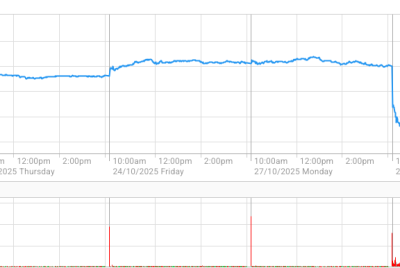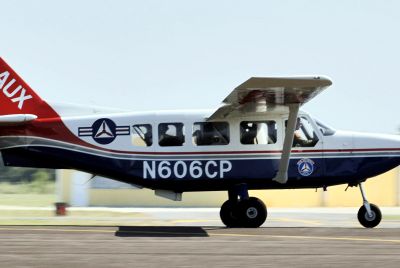2013 Comet ISON: NASA Spots 'Comet of the Century' in Leo Constellation, Comet ISON Brightening Up
The National Aeronautics and Space Administration (NASA) captured an image of the 2013 Comet ISON in the Leo constellation (The Lion) using a 14-inch telescope on October 25 at the agency's Marshall Space Flight Center located in Huntsville, Alabama. According to the NASA officials, the greenish comet in the image was approximately 132 million miles (212 million kilometers) from planet Earth while blazing through space at nearly 88,000 mph (142,000 km/h).
"The diagonal streak right of center was caused by the Italian SkyMed-2 satellite passing though the field of view," the NASA officials wrote. Viewers may be required to do a little work when it comes to spotting the Comet ISON now.
The agency officials further added: "At magnitude 8.5, the comet is still too faint for the unaided eye or small binoculars, but it's an easy target in a small telescope." However, the approaching comet is reportedly brightening up for a remarkable display during its closest approach with the Sun on November 28 and Earth on December 26.
Emmanuel Jehin together with C. Opitom, J. Manfroid, and M. Gillon of Liège University has been keeping their eyes on Comet ISON since October 12 with the robotic TRAPPIST 0.6-m telescope at ESO La Silla Observatory. "The gas production rates have finally increased rapidly the last days! This surge maybe due to an outburst or maybe deeper layer of ices is finally now sublimating," Mr Jehin stated.
He further added: "I do not think the comet is disrupting now, as we do not see any special feature in the coma, shell or large dust production in the last nights. The coming nights will tell us more about this surge of activity, and maybe the fate of the comet."
The 2013 Comet ISON became more interesting with the formation of an unusual tail. A comet watcher named John Bortle of Stormville, New York captured Comet ISON through a 15x70 binoculars on November 4 with magnitude estimation at 8.8. In the 16.1-inch reflecting telescope used at 70-power, Mr Bortle was stunned with the tail's unusual appearance.
"Rather than the typical either vague 'fan,' or narrowing 'apple-on-a-stick' aspect that fades rapidly with increasing distance from the comet's head, ISON presented a long, straight tail - not quite a half degree long - with parallel sides that was as wide as the comet's head. What really stood out to me was that, although faint over its entire length, it was of almost even surface brightness over its length, except toward its very end. I don't think I've ever seen such an appearance in a telescopic comet; truly odd looking," Bortle said.
Denis Buczynski, a British observer, agrees and believes that there has been progress when it comes to observing Comet ISON's tail structure. "It will be interesting if other images from telescopes in better locations and conditions show this feature to be real," Denis Buczynski stated.
Comet ISON is expected to flyby at 730,000 miles (1.2 million km) above the surface of the Sun on November 28. Experts declare that if Comet ISON endures the close approach to the Sun, then sky gazers will be able to witness the astonishing display of the "Comet of the Century" through the first half of December.
More Articles to Read:
2013 Comet ISON: Latest Images Show 'Comet of the Century' Growing a New Ion Tail - [READ]
2013 Comet ISON: Professional Photographer Justin Ng Captures the 'Comet of the Century' October 27 Journey - [READ]
2013 Comet ISON: National Science Foundation Launches Comet ISON Photo Contest for Amateur Astronomers - [READ]





















